As a mom of two (with another little one on the way!), let me tell you – there’s something about that nesting stage that just hits different every time.
I start looking at soft fabrics and tiny patterns and think, okay, I need to make something for this baby.
Sewing keeps my hands busy, and letting all that excitement (and a little bit of nervous energy) turn into something tangible.
These are twelve sweet, simple baby projects you can sew before your baby arrives – things that are actually useful once you’re in the thick of newborn life.
Soft, cozy, and made with a whole lot of love.
12 Best Baby Sewing Projects to Make Before Your Baby Arrives
If you’ve got the urge to sew before your baby arrives, lean into it.
There’s something so grounding about sitting down with soft fabric and a quiet moment, knowing you’re making things your little one will actually use.
Start with one or two, take your time, and enjoy turning simple stitches into something made with love (and maybe a few happy tears).
1. Burp Cloths
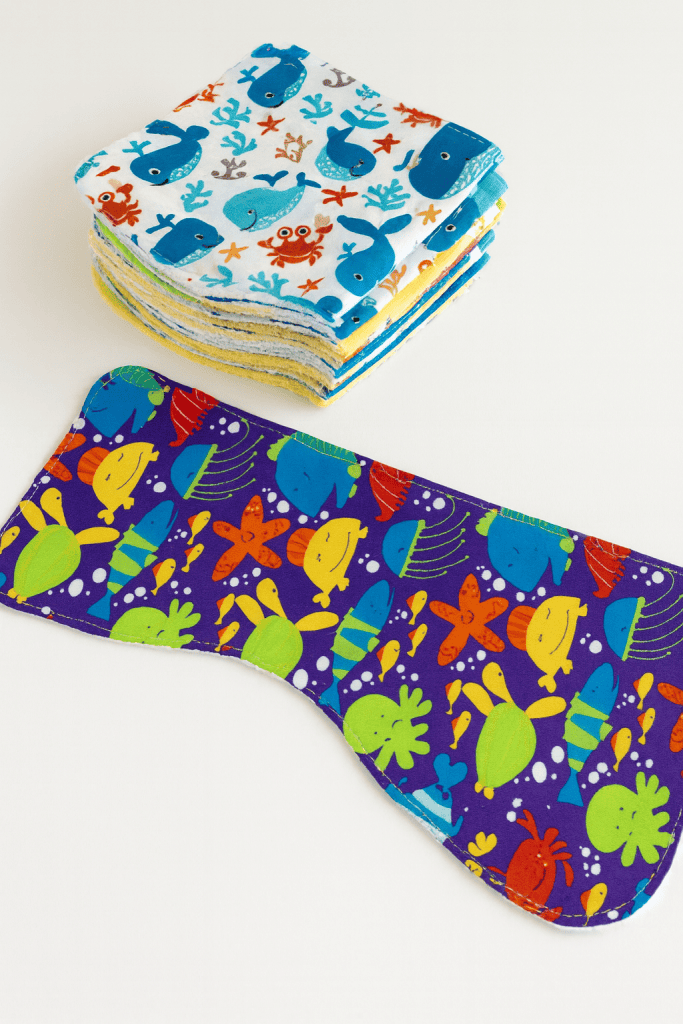
Burp cloths are one of those things you just can’t have too many of.
They sew up fast, they’re cute, and they save so many outfits.
Soft flannel, muslin, or bamboo terry all work great—anything that’s gentle on baby’s skin but still soaks up well.
Go for calm colors or simple prints that blend in with everyday life.
Once the baby’s here, these will be everywhere – in the diaper bag, by the rocking chair, over your shoulder.
2. Swaddle Blankets
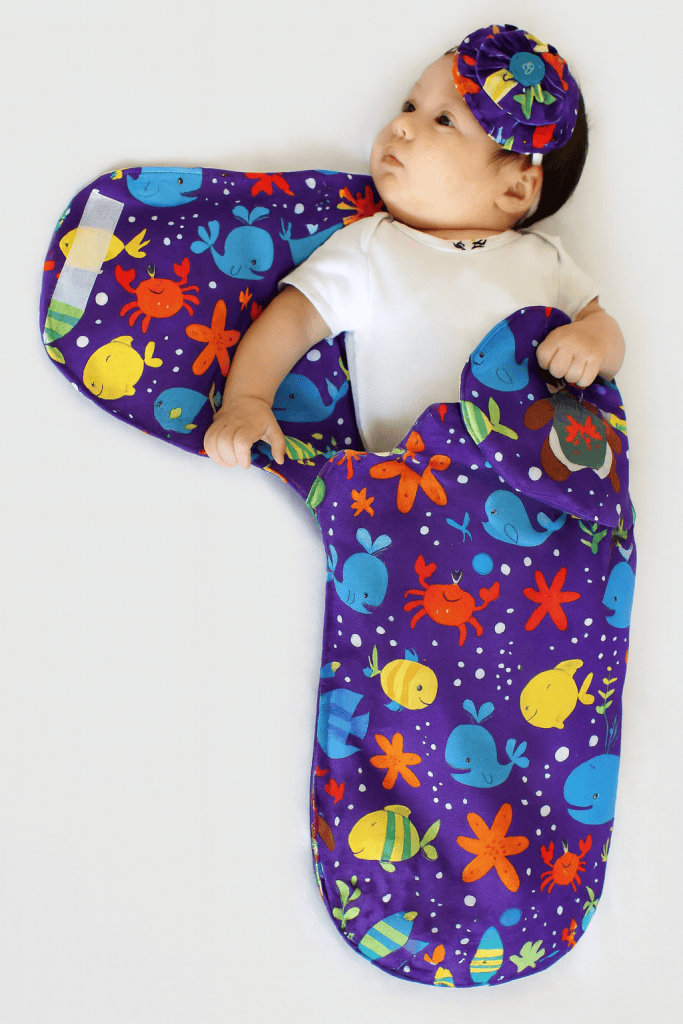
A good swaddle blanket is like magic in those early weeks.
They’re lightweight, breathable, and so easy to make – just a big square of cotton muslin or double gauze with clean edges.
Around forty to forty-five inches wide is a nice size for wrapping.
Make a few extras because they double as nursing covers, stroller blankets, and even a soft spot for tummy time.
3. Baby Bibs
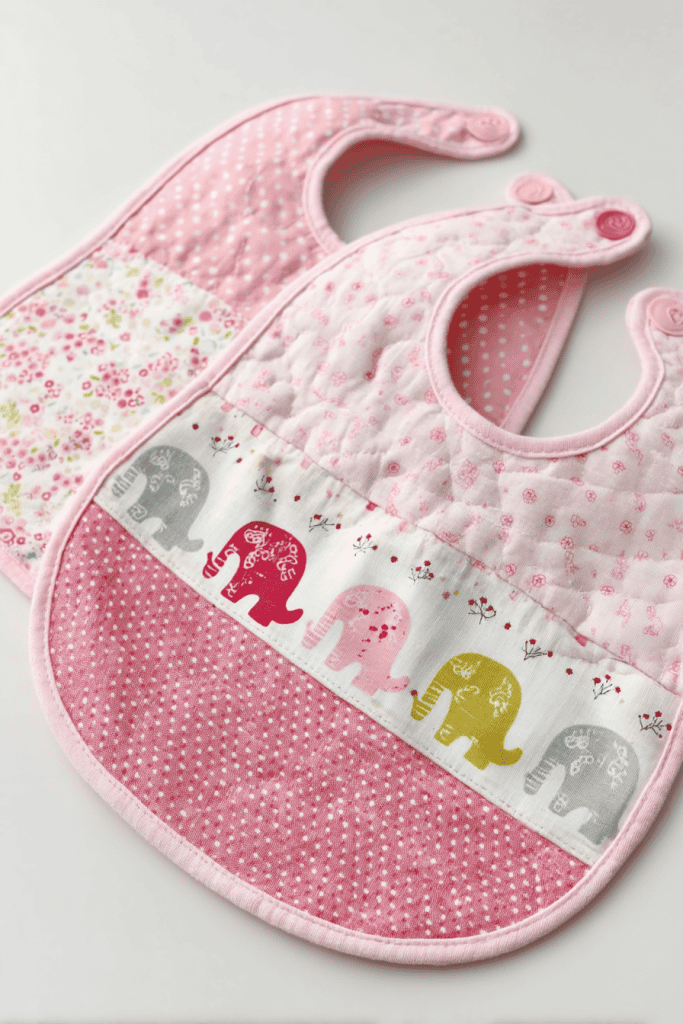
Bibs are quick, satisfying little projects that make everyday messes so much easier to handle.
Flannel or cotton on the front with terry cloth or bamboo fleece on the back works beautifully.
Add a soft snap or bit of Velcro and you’re done.
They’re practical, cute, and you’ll go through a bunch of them once teething drool kicks in.
4. Crib Sheets
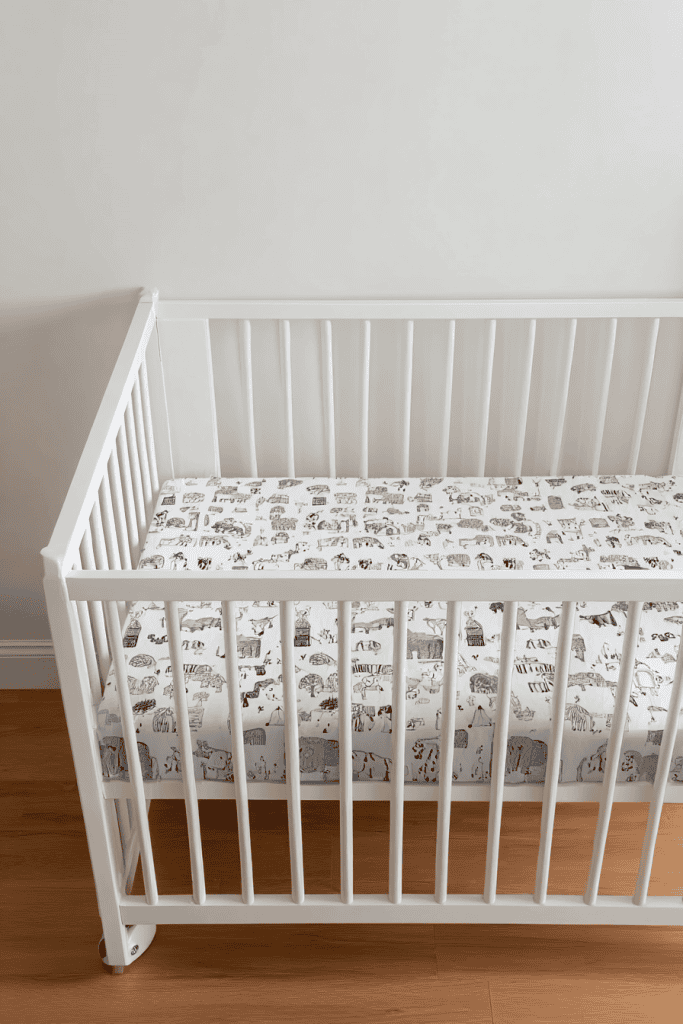
Sewing crib sheets is easier than it sounds, and it feels good knowing your baby’s sleeping on fabric that’s soft and safe.
Cotton percale, linen, or jersey knit are all great options – they’re breathable and cozy.
Measure your mattress for a snug fit and make a couple so you always have a fresh one ready.
Handmade sheets add that quiet, personal touch to the nursery.
5. Changing Pad Covers
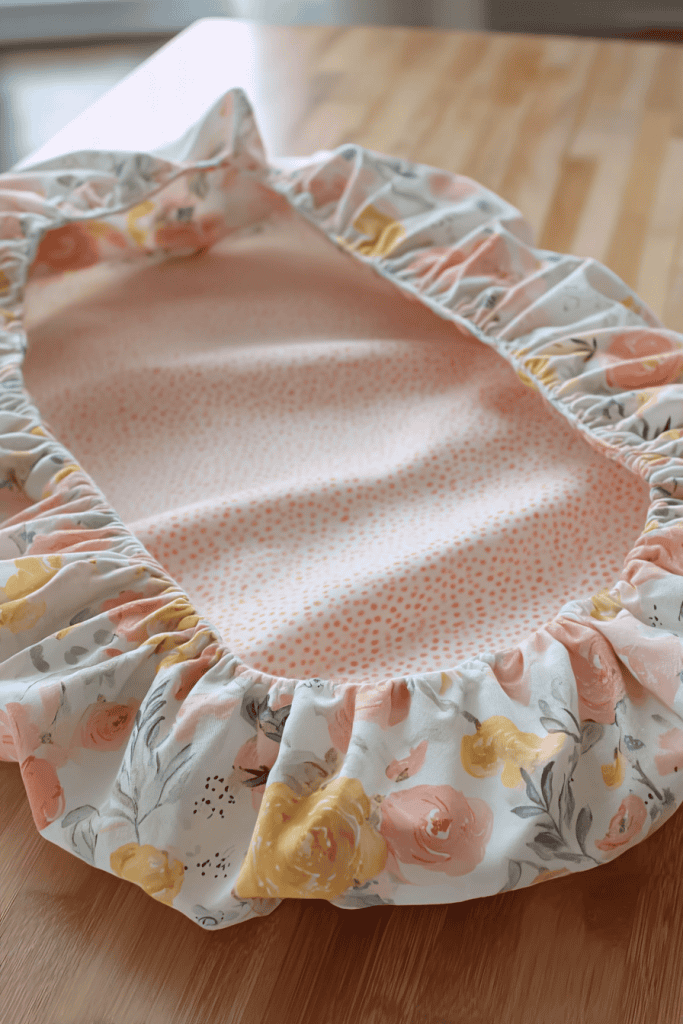
A changing pad cover makes those countless diaper changes a little softer and a lot more comfortable.
It’s one of those small touches that just makes daily care smoother.
Choose a fabric that’s gentle on baby’s skin and easy to toss in the wash – cotton, linen blend, or soft jersey all work well.
Elastic corners help it stay snug and secure, even through all the wiggling.
Having two or three on hand means you’ll always have a clean one ready when messes happen (and they will).
6. Baby Gown or Sleep Sack

Nighttime changes get so much easier with a soft baby gown or sleep sack.
No snaps to fumble, no pants to pull down – just quick access when you need it.
Stretchy knit fabrics like cotton interlock or bamboo jersey are perfect since they keep baby cozy without feeling tight.
Add an envelope neckline or zipper for simple dressing.
These gowns keep little feet tucked in and warm, helping everyone get back to sleep faster.
7. Fabric Baskets
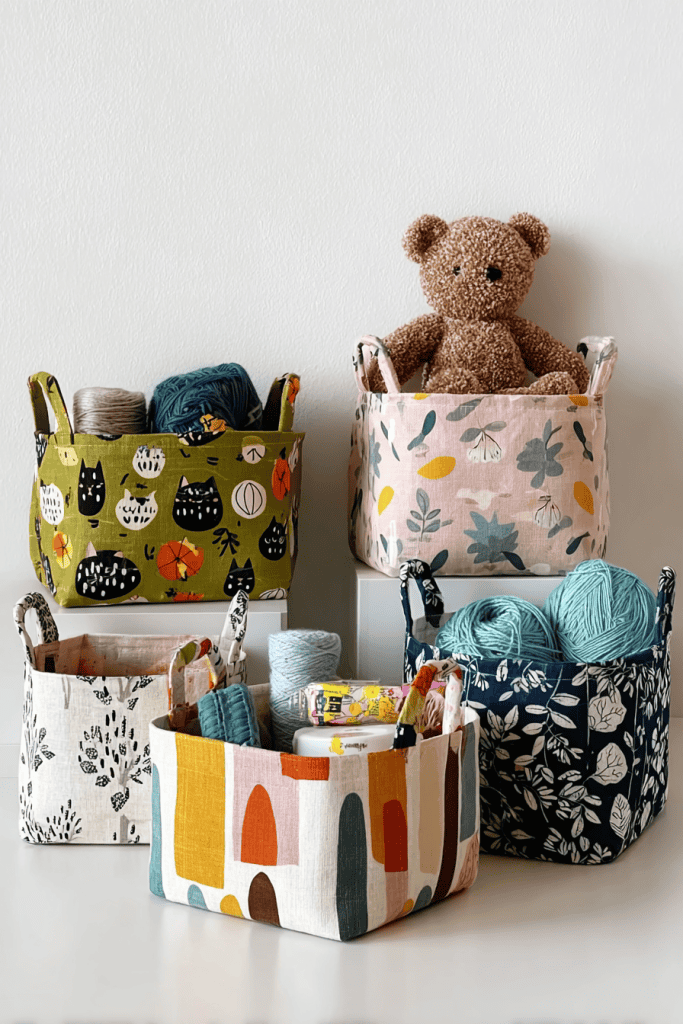
Fabric baskets are so helpful for baby organization.
They’re perfect for holding wipes, burp cloths, socks, pacifiers—basically all those little things that never seem to stay in one place.
Use sturdy cotton canvas or linen so they hold their shape, and make a few in different sizes to fit shelves or drawers.
They keep everything within reach and make the nursery look neat without feeling too “perfect.”
8. Baby Hat

A baby hat is tiny but mighty. It helps keep warmth right where babies lose it most.
These sew up in minutes and make such a difference in those early weeks.
Soft, stretchy fabrics like cotton knit or ribbed jersey work best, and a simple folded cuff adds a snug fit.
They’re also a great way to use up fabric scraps, so you can make a few extras for the diaper bag or car seat.
9. Booties or Mittens
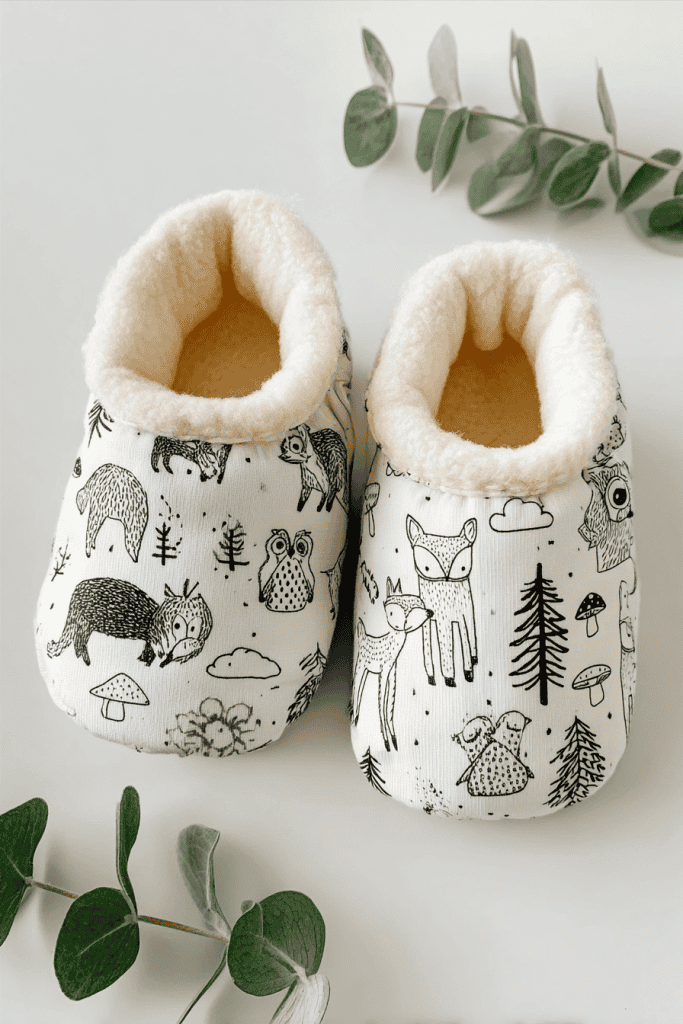
Tiny but oh-so-useful, booties and mittens help keep baby warm and protect that soft skin from little scratches.
They’re quick to make and perfect for using up fabric scraps.
Soft flannel, cotton knit, or light fleece all work beautifully – cozy but never bulky.
Add a bit of elastic or a gentle tie so they stay put without bothering baby.
They’re small projects with a big payoff, especially in those early weeks when warmth and comfort matter most.
10. Quilted Play Mat
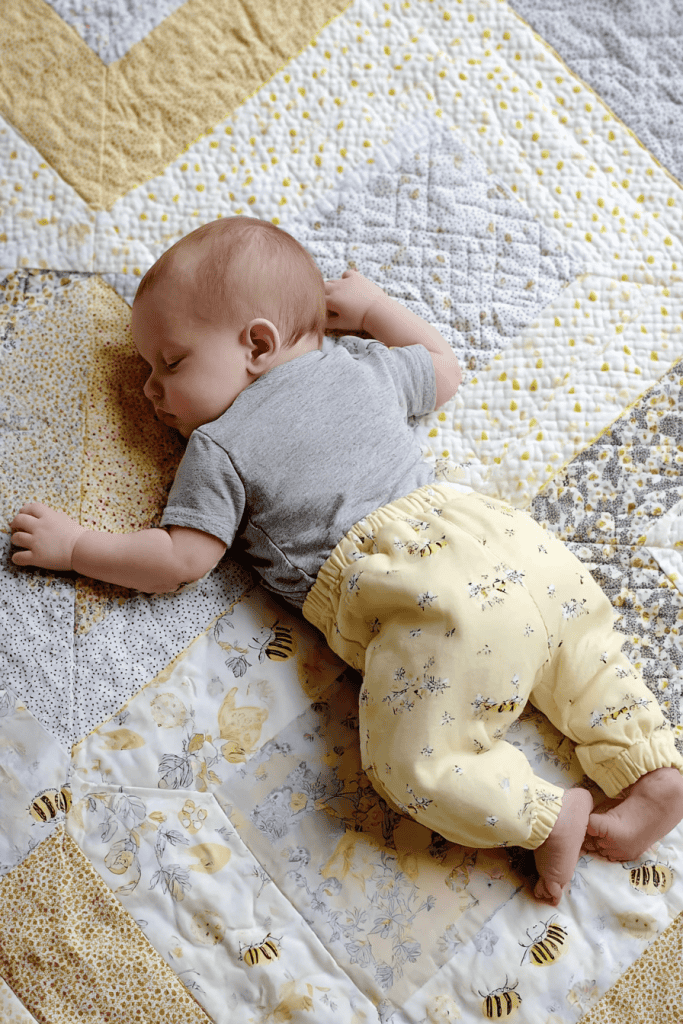
A quilted play mat gives your baby a soft, cozy spot for tummy time, play, or naps nearby.
It’s simple to make with layers of cotton or linen and a few quilting lines to hold it all together.
Neutral fabrics and sturdy stitching keep it timeless and easy to wash.
The best part is, it grows with your little one – from a play mat now to a picnic or reading blanket later on.
11. Washcloths or Reusable Wipes

Washcloths might not sound exciting, but they’ll be some of the most-used things you make.
Cut squares of soft flannel, bamboo, or cotton terry, and finish the edges cleanly. That’s it!
Keep a small stack near the changing table, in the bath area, or in your diaper bag.
They’re gentle, washable, and such a great way to skip disposables while keeping things simple and clean.
12. Heirloom Blanket
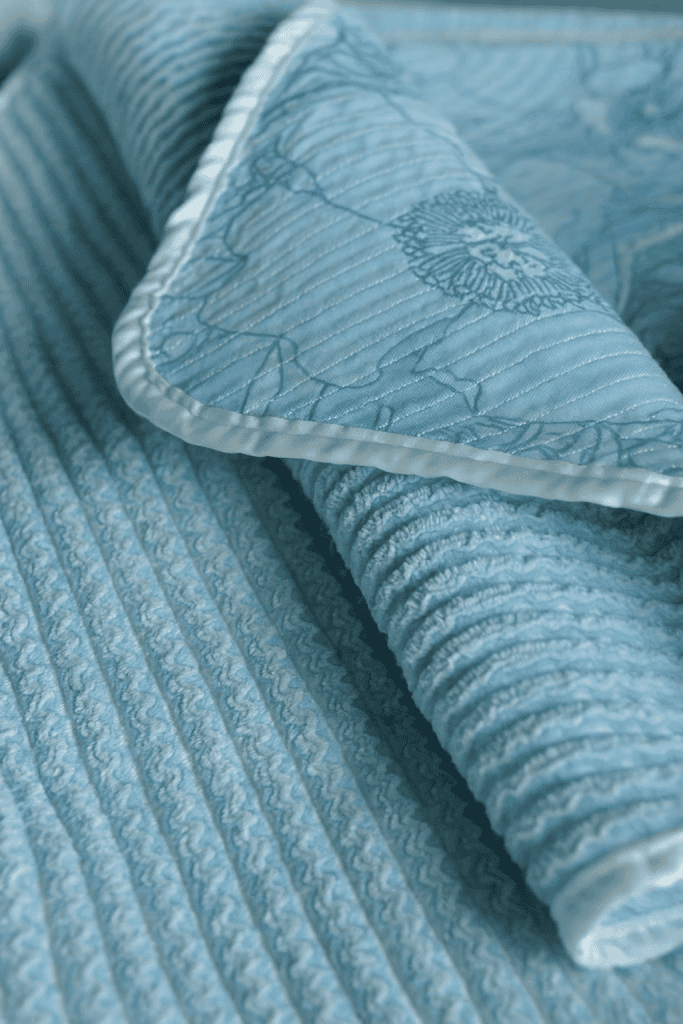
An heirloom blanket will keep your baby warm.
Whether it’s quilted, knitted, or sewn from a soft piece of linen, the goal is simple: comfort that lasts.
Take your time with it, use quality fabric, and keep the design classic.
Long after the newborn days, it’ll still hold a bit of that love and care that went into every stitch.
How to Prepare Your Sewing Corner Before Baby Arrives
Before jumping into all those sweet baby projects, take a little time to set up your space.
Clear your table, gather only what you’ll actually use (scissors, pins, thread, ruler, machine), and give your fabrics a quick wash so they’re soft and safe for baby’s skin. Fold them neatly and keep them close by – you’ll be surprised how often inspiration strikes between naps or laundry loads.
A bit of natural light helps too. It’s easier on the eyes and makes everything feel more peaceful.
Maybe keep a cup of tea nearby, or play a quiet playlist while you sew.
When your sewing corner feels inviting, it’s easier to sit down, breathe, and make something lovely for your baby.
New to sewing? You might like this post on how to start sewing kids’ clothes – it’s full of simple tips to help you feel confident from the very first stitch.
Tips for Choosing Fabrics and Patterns
Babies have soft, sensitive skin, so it’s best to stick with gentle, breathable fabrics that feel cozy and safe.
Choose natural fibers like:
- Cotton – soft, easy to wash, and simple to sew.
- Linen – lightweight and airy, perfect for warmer days.
- Flannel – warm, snuggly, and great for cooler weather.
- Muslin or double gauze – extra gentle and perfect for swaddles or summer outfits.
If you can, go for organic or OEKO-TEX certified fabrics.
They’re free from harsh treatments and dyes, which means fewer irritants for your baby’s skin.
As for patterns, keep things simple and forgiving.
Look for:
- Beginner-friendly designs with clear steps.
- Loose fits that allow room to grow and move.
- Fewer fasteners – elastic waists, soft snaps, or envelope necklines are all easier for dressing and washing.
And don’t forget to prewash your fabrics before cutting. It removes residue and prevents shrinking later.
Simple shapes, soft colors, and natural textures always win.
When in doubt, choose comfort over perfection – your baby will thank you with every cozy nap and wriggly smile.
Take It One Project at a Time
Sewing just one thing at a time (whether it’s a stack of burp cloths or a cozy swaddle) adds up faster than you’d think.
Focus on small wins.
Each project you finish brings a little more confidence and calm before baby arrives.
Once you’ve got a few pieces ready, take a moment to appreciate the work you’ve done.
You’ve turned simple fabric into something that will make everyday life easier (and a little sweeter).
What will you sew first? Share it in the comments – I’d love to hear what’s on your sewing table!
FAQs
1. What are the best fabrics for sewing baby items?
Natural fibers are always the safest and most comfortable choice. Cotton, linen, bamboo, and muslin are breathable, soft, and easy to wash. Avoid synthetic fabrics, which can trap heat or irritate the skin.
2. How early should I start sewing baby projects?
You can begin as soon as you feel ready – many parents start during the second trimester when energy levels are steadier. Starting early gives you time to sew slowly and enjoy the process without pressure.
3. How do I wash and care for handmade baby items?
Pre-wash all fabrics before sewing, then wash finished items in mild detergent with warm water. Avoid fabric softeners, as they can reduce absorbency. Line-drying helps extend the life of your handmade pieces.
4. Are there beginner-friendly patterns for these projects?
Yes. Many online pattern makers and fabric shops offer free or beginner-level patterns for bibs, burp cloths, and swaddle blankets. Look for patterns with clear step-by-step photos or simple construction techniques.
5. How should I store finished baby projects before birth?
Keep completed projects in breathable containers – woven baskets or cotton bags work well. Store them in a clean, dry area away from direct sunlight. That way, they stay fresh and ready for use when your baby arrives.

